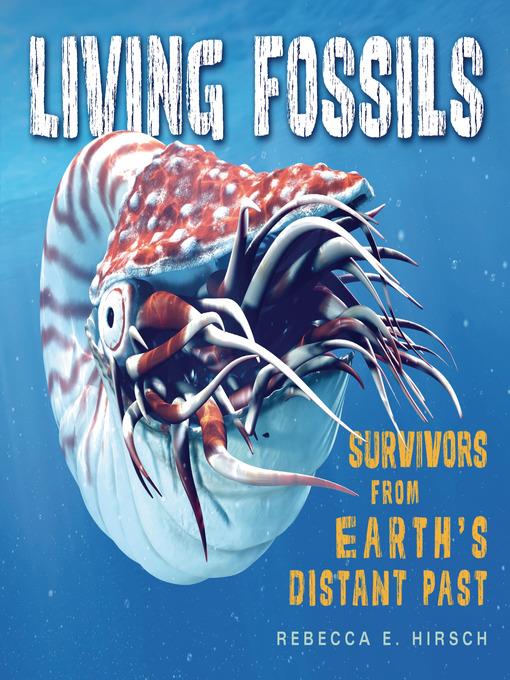
Living Fossils
Survivors from Earth's Distant Past
کتاب های مرتبط
- اطلاعات
- نقد و بررسی
- دیدگاه کاربران
نقد و بررسی

August 15, 2020
Over the millennia many creatures have come and gone, but six unusual animals have survived and changed very little. From numerous possibilities, Hirsch has chosen six examples of animals that could be called "living fossils," although she makes clear that, like other life on Earth, they've evolved over time. In choosing, she also looked for animals with uncommon traits, highlighted in her descriptions. Her selections--horseshoe crabs from the Atlantic coast, chambered nautilus from the Indian and Pacific oceans, West African lungfish, tuatara from New Zealand, duck-billed platypus from Australia, and selenodon from Hispaniola--are a combination of familiar and surprising. Each animal gets two or three spreads, including a full-page photograph, a nicely written introduction, and a box with fast facts. Photos are nicely captioned, but they don't always indicate magnification. An introductory chapter covers the theories of evolution and natural selection and discusses the way a living fossil, such as the velvet worm, still so like Aysheaia from the Cambrian era, actually has evolved. It includes a timeline. A final spread reminds readers that living fossils, who've survived major extinctions, are threatened again by a human-caused sixth. Well-organized, clearly written, nicely designed, and including new research, this will be welcomed in libraries, even those already owning Caroline Arnold's Living Fossils: Clues to the Past, illustrated by Andrew Plant (2016), which describes some of the same intriguing creatures. (This book was reviewed digitally with 8.875-by-21.25-inch double-page spreads viewed at 56.6% of actual size.) A satisfying selection of nature's survivors for readers intrigued by the animal world. (author's note, source notes, glossary, further resources, bibliography, index, photo acknowledgments) (Nonfiction. 9-14)
COPYRIGHT(2020) Kirkus Reviews, ALL RIGHTS RESERVED.

October 1, 2020
Grades 4-7 Not satisfied with finding animals that are only similar to certain fossils, Hirsch limits her discussion to creatures that closely resemble their fossilized relatives, display some uncommon traits, and are nearly the last of their kind. After a brief history of animal life on earth and a helpful explanation of natural selection, chapters are devoted to six species: the horseshoe crab, chambered nautilus, lungfish, tuatara, platypus, and solenodon. The covered topics vary widely, based on what Hirsch finds remarkable about the animals. For instance, though the horseshoe crab was nearly driven to extinction by the use of its blood to alert researchers to the presence of bacteria, the production of a chemically similar substance in the 1980s saved the species (and the migrating shorebirds dependent on its eggs). Hirsch organizes the facts logically, presents them clearly, and shares her fascination with each of the varied animals described. Clear, well-captioned color photos offer excellent views of the featured species, and the time lines in certain chapters are useful as well. An informative book for readers drawn to strange and amazing animals.(Reprinted with permission of Booklist, copyright 2020, American Library Association.)

December 1, 2020
Gr 4-8-Life on Earth has existed for nearly 3.5 billion years, but 99.9 percent of the species that have ever lived have gone extinct. Six of these living fossils are described in engaging, easy-to-read, and beautifully illustrated chapters. These living fossils include horseshoe crabs, which climb ashore from their deep-sea habitat to lay thousands of eggs from Florida to Maine; the West African lungfish, which has a dual system of gills and lungs; and the tuatara lizard of New Zealand, which can slow its heart to seven beats an hour and live to at least 100 years. Full-color drawings, charts, and photographs spotlight these living fossils, their fragile habitats, and the scientists who study them. A time line details the history of life on Earth. A glossary, an index, sources, and websites are included. VERDICT Recommended for all libraries. This illustrated title is a fascinating overview of animals that are the last or almost the last of their kind within the context of evolution and extinction.-Frances E. Millhouser, formerly at Fairfax County P.L., VA
Copyright 2020 School Library Journal, LLC Used with permission.

























دیدگاه کاربران